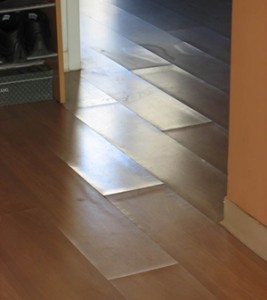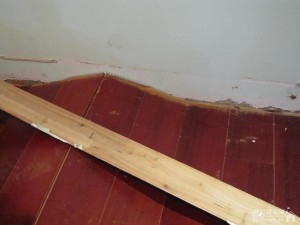Local arch camber of wood floorings always trouble owners. What on earth would cause
this phenomenon and how to avoid it?
Reasons why wood floorings would cause local arch camber:
First, moisture contents of the surface layer are a little higher or lower than normal
conditions. When it is a little higher, hardwood floorings would loose moisture in the dry
air. The fracture would shrink, crack and deform. When it is a little lower, hardwood
floorings absorb moisture after installation. Thus, it would cause local arch camber.
Second, if stone concrete or heat-preserved sound insulation material between the wooden
joist are not dry enough, hardwood floorings would camber or deform after installation.
Third, if the floors are not installed with skirtings or vent, the moisture inside can not expel
after installation.
Forth, if the subfloor do not have gap or just have few, surface layer would camber or
deform after damp expansion.
In order to prevent arch camber or deformation, we should pay attention to several points
when installing.
First, control the moisture content, less than 12%
Second, stone concrete or heat-preserved and sound insulation material between the
wooden joists should be dried before installtion.
Third, set the vent reasonably. The grooves should be open to each other and connected
with the surface layer. There should be more than 2 vents in every room and every
skirting board. The vents must be well-ventilated.
Forth, We should open the gap of subboards. Normally, it is 2mm to 5mm. The surface
should be planed and staggered. There should be a distance of 10mm to 15mm between
the walls.
Fifth, there should be a 10mm gap between the surface layer and the wall, and use
skirtingboards or skirting to seal them.



Pingback: Konya SEO Uzmanı
Pingback: Konya SEO Uzmanı
Pingback: Konya Evden Eve Nakliyat
Pingback: Konya Evden Eve Nakliyat
Pingback: find location by phone number
Pingback: Buy followers instagram
Pingback: internet sitesi kurma
Pingback: football skills
Pingback: cristiano ronaldo skills